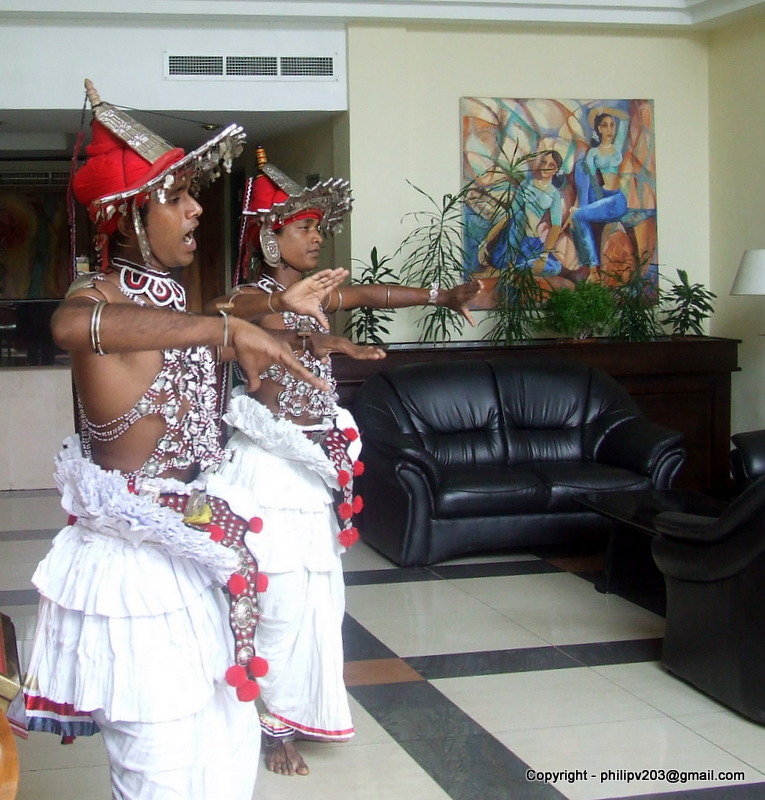 |
| The damed up stream with an artificial pond |
 |
| The float on empty steel drums being decorated. |
 |
| Fresh flowers being threaded. |
 |
| The float. |
The retreat of Buddhist monks during the rainy season of the year is called 'Vas'. The book of 'Vinaya' - rules of the Buddhist canon - has rules regarding the observance of 'Vas'. At the end of 'Vas' there is an act called 'Sivura pavaereema'. This involves the giving of a fresh set of robes to the monk. The robe during the Saakyamuni's presence on earth was made by collecting the clothing covering corpses and from these a patch-work robe was stitched. This was then washed, dyed, allowed to dry and was given to the monk. The present day rituals in Sri Lanka involves laymen buying a white linen cloth, cutting it, making a robe by stitching, washing and dyeing it and then drying it. A special enclosure called a 'Seema maluwa' is made on land or water. The priests taking part in the ceremony have to confess any transgressions made to another monk of 'Upasampadaa' rank. If there are no transgressions demanding dismissal - 'Paaraajika' - the monks are led to the enclosure. The monks then do the donation of the robe ceremonially, reciting the appropriate 'Gaathas'. No one else is allowed to enter this 'Seema maluwa' other than monks holding a rank of 'Upasampadaa'.
The above are some of the scenes of preparation for this event held for the Chief Monk, Rev Gonagala Somaloka, at the Sri Jayabodhi Vihara, Avissawella, Sri Lanka.
These traditions have been observed in Sri Lanka for more than 2000 years.
Click on the web-link below to view some videos I took and posted on my site on Youtube.:-
http://youtu.be/hqkMiJGb6Pc






















